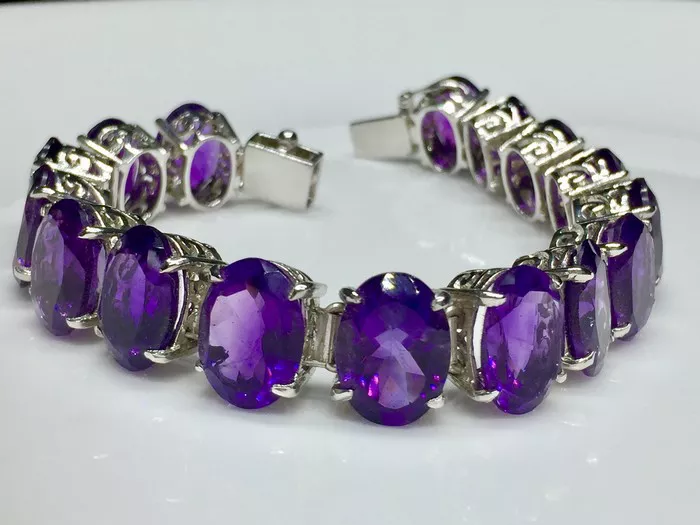Crystals have captivated humans for centuries, revered for their beauty, purported healing properties, and spiritual significance. However, with the growing popularity of crystals, the market has become flooded with imitations and synthetics, making it crucial to discern the real from the fake. Understanding how to identify genuine crystals is essential for both collectors and enthusiasts alike. This article serves as a comprehensive guide to determining the authenticity of crystals, covering everything from physical properties to simple tests and common misconceptions.
Physical Properties of Genuine Crystals
When assessing the authenticity of a crystal, it’s important to consider its physical properties. Genuine crystals possess certain characteristics that distinguish them from their synthetic counterparts. Weight, temperature, and transparency are key indicators of a crystal’s authenticity.
Firstly, genuine crystals typically have a certain weight to them. While this can vary depending on the type of crystal, authentic specimens often feel substantial in the hand compared to lighter imitations. This weight is a result of the crystal’s density and mineral composition.
Secondly, temperature can provide valuable insight into a crystal’s authenticity. Authentic crystals tend to feel cool to the touch, as they have the ability to absorb and dissipate heat. In contrast, synthetic crystals may feel warmer, as they often lack the natural thermal properties of genuine specimens.
Transparency is another important factor to consider when assessing a crystal’s authenticity. Genuine crystals exhibit varying degrees of transparency, ranging from completely transparent to opaque, depending on the type of crystal and its mineral composition. However, regardless of transparency level, authentic crystals typically have a clarity and brilliance that is difficult to replicate in imitations.
Visual Inspection Tips
Visual inspection is a crucial aspect of determining the authenticity of a crystal. By closely examining the physical characteristics of the specimen, one can often spot telltale signs of a fake.
One common indicator of a fake crystal is the presence of air bubbles within the specimen. Authentic crystals form naturally within the Earth’s crust over millions of years, during which time any air bubbles present are typically expelled. In contrast, synthetic crystals may contain trapped air bubbles as a result of the manufacturing process.
Color saturation is another important factor to consider when assessing a crystal’s authenticity. Genuine crystals often exhibit rich, vibrant colors that are consistent throughout the specimen. In contrast, synthetic crystals may have an artificial appearance, with colors that appear overly saturated or unnatural.
Clarity is also a key characteristic of authentic crystals. Genuine specimens typically have a clarity that allows light to pass through unimpeded, resulting in a brilliant sparkle. In contrast, fake crystals may appear cloudy or dull, lacking the clarity and brilliance of the real thing.
Tests for Authenticity
In addition to visual inspection, there are several simple tests that can help determine the authenticity of a crystal. One such test is the scratch test, which involves using the Mohs Hardness Scale to assess the hardness of the specimen.
The Mohs Hardness Scale, developed by Friedrich Mohs in 1812, is a scale that ranks the hardness of minerals on a scale of 1 to 10, with 1 being the softest and 10 being the hardest. By comparing the hardness of a crystal to the minerals on the Mohs Scale, one can determine whether it is genuine or not.
Another test for authenticity is the water test, which involves placing the crystal in a container of water to see if it sinks or floats. Genuine crystals typically have a higher density than water and will sink when placed in a container of water. In contrast, synthetic crystals may have a lower density and may float or remain suspended in the water.
Understanding Crystal Imperfections
It’s important to note that not all imperfections are indicative of a fake crystal. In fact, natural imperfections are often a sign of authenticity, as they are a result of the crystal’s formation process within the Earth’s crust.
Common imperfections found in genuine crystals include inclusions, fractures, and growth lines. These imperfections are a natural part of the crystal’s formation process and can provide valuable insights into its history and origin. In contrast, synthetic crystals may appear flawless and perfect, lacking the unique characteristics of genuine specimens.
Guide to Avoiding Fakes
To avoid purchasing fake crystals, it’s important to buy from reputable sellers who specialize in authentic specimens. Look for sellers who provide detailed information about the origin and authenticity of their crystals, and who are transparent about their sourcing practices.
When purchasing crystals online, be wary of deals that seem too good to be true. While it may be tempting to purchase cheap crystals, particularly when buying in bulk, these deals often involve low-quality imitations or synthetic crystals masquerading as the real thing.
If possible, inspect the crystal in person before making a purchase. This allows you to closely examine the physical characteristics of the specimen and ensure its authenticity.
FAQs and Myths
Q: Can synthetic crystals have healing properties?
A: While synthetic crystals may be aesthetically similar to genuine specimens, they do not possess the same metaphysical properties or healing energies as natural crystals. Genuine crystals are believed to absorb, store, and transmit energy, while synthetic crystals lack these natural properties.
Q: Are all crystals found in nature genuine?
A: Not necessarily. While crystals found in nature are often genuine, there are instances where natural crystals may be enhanced or treated to improve their appearance. It’s important to research the origin and authenticity of a crystal before making a purchase.
Conclusion
In conclusion, identifying genuine crystals requires a combination of visual inspection, knowledge of physical properties, and simple tests. By familiarizing yourself with these techniques, you can confidently assess the authenticity of crystals and avoid falling victim to fakes. Remember to purchase from reputable sellers, avoid deals that seem too good to be true, and always trust your instincts when it comes to determining the authenticity of a crystal.

